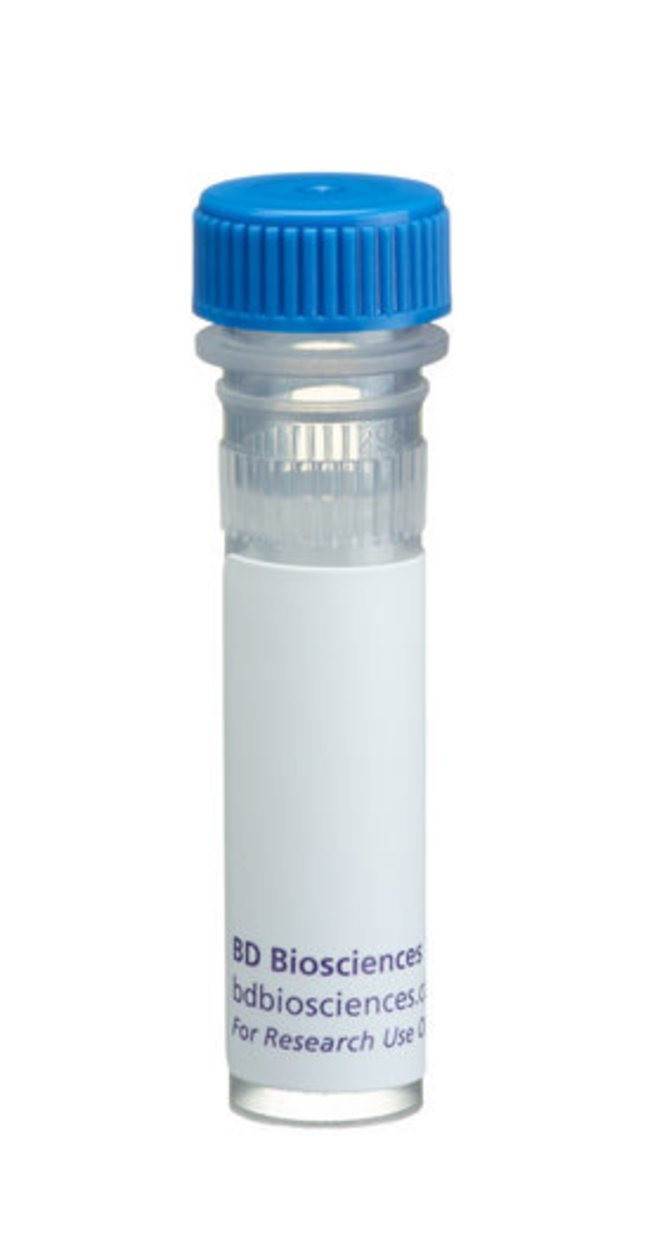Lck (pY505) Mouse, Unlabeled, Clone: 4, BD, Mouse Monoclonal Antibody, Each

Details
Protein tyrosine phosphorylation is an essential step in the signal transduction cascade leading to T cell antigen receptor (TCR) activation. Lck is a protein kinase and a member of the src family of cytoplasmic protein-tyrosine kinases (PTKs). Members of this family have several common features: 1) unique N-terminal domains, 2) attachment to cellular membranes through a myristylated N-terminus, and 3) homologous SH2, SH3, and catalytic domains. The unique N-terminal domain of Lck interacts with the cytoplasmic tails of the CD4 and CD8 cell surface glycoproteins. CD4 and CD8 bind to surface MHC class II and class I molecules, respectively. Lck is regulated by both kinases and phosphatases. Autophosphorylation at Y394 leads to conformational changes in the catalytic domain, which induces kinase activity. Repression of Lck occurs via phosphorylation at Y505, located near the carboxy-terminus. Phosphorylation of this tyrosine site is mediated by the Csk family of PTKs. Upon phosphorylation at this site, Lck associates with the SH2 domain in the amino-terminus, thus keeping the protein biologically inactive. Lck activity and regulation is critical for activation and development of T cells.Flow Cytometry, Intracellular Staining, Western Blotting
Additional Information
| SKU | 10135568 |
|---|---|
| UOM | Each |
| UNSPSC | 12352203 |
| Manufacturer Part Number | 612390 |
